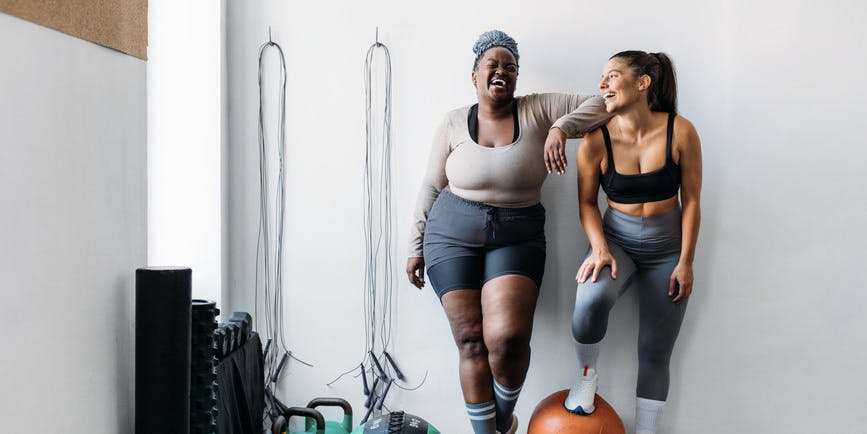
What you should know about taxes and medical deductions

If tax-time stress has you deleting this newsletter, climbing under a gravity blanket and listening to a money stress-relief meditation, we won’t take offense.
Otherwise, we’re here to help with body-finance updates for singletons, money-savers and glasses-wearers. We close with bird flu and health cost updates—and some unsettling news about forever chemicals in Band-Aids!
But first, get your (100% free)...
- Checkup: stress relief + simplification
- Tax Time: singles + deductions + glasses
- Healthcare: Band-Aids + health $$$ + 🐓 flu
The Checkup
- Relieve tax tension with these stress-relieving yoga poses
- Whether snow caps or sun shades, do hats cause hair loss?
- Docs weigh in on long waiting room waits + leaving etiquette
- Across voting lines, Democrats win at health insurance trust
- Listen to your body may not be a safe cue for all exercisers
- An essay on when + why self-help won’t cure chronic illness
- Rogue agents are switching ACA health plans w/o permission
- Dietitians dispel TikTok’s OatZempic trend but hail healthy oats!
- An intriguing look at words + meds + pain = the nocebo effect
- Why we should eat 30 fruits + veggies a week + how to do it
The singles tax

As detailed in Vox, compulsory couplehood means single people + those in unmarried partnerships can’t access 1,000 benefits like spousal IRAs (where partners can take out funds without penalties) + social security survivor benefits! Only marriage offers workplace insurance flexibility, where one partner can enter/exit the workforce or take a job that doesn't offer insurance because they can stay on their partner’s workplace plan.
“Single people, particularly single people with chronic health conditions, have fewer options, even after the rollout of Obamacare,” Vox notes.
Calculations from a decade ago estimate that an unmarried woman making 40K yearly pays 500K more in taxes, housing + other expenses over her lifetime than a married woman.
Do the income multiplication as you will—then work in current inflation rates. Eek.
Bodies + deductions

Paying income tax on money we use for medical expenses can trigger tons of cringy feelings, right? Here’s a rundown of what you can deduct from your taxes, detailed in Yahoo Finance.
- You can't deduct your premium costs if you get insurance through your job.
- You can deduct your premium costs if you're self-employed.
- You can deduct out-of-pocket medical expenses from your federal returns if they exceed 7.5% of your adjusted gross income + you itemize them.
- But most people won’t have medical costs totaling higher than their standard deduction. (Your CPA, tax service + the article can tell you what that is for your family size.)
- Qualifying deductions include doctor, therapist, and dentist fees, lab work, prescription costs, medical tools + inpatient treatment programs.
- Most states also allow medical deductions. But not all. (Why?!)
- You can deduct contributions to your Health Savings Account (HSA).
Not sure how to use an HSA or FSA for medical expenses? Learn about HSAs + tax savings!
When glasses boost income

We might take a stylish set of specs for granted. But a new study reported in NPR shows their transformative capabilities.
Researchers found that giving farsighted villagers in Bangladesh glasses increased their income by 33%!! Many who were out of the workforce were also newly able to get jobs.
Distance glasses are still tightly regulated in many low- and middle-income countries. But the researchers found it easy to train community workers to fit locals with reading glasses. (The kind we get at drugstores.)
The program costs only a few dollars per person—a wake-up call for those who have been gatekeepers to this form of care.
Healthcare 411
Band-Aid, Walmart and CVS among bandage brands containing toxic PFAS (Guardian). 65% of independently tested bandages and absorbent pads contained high levels of forever chemicals linked to cancers, thyroid issues, liver problems, congenital disabilities and other serious health issues. Used primarily to help products stick to skin, they’re particularly dangerous given their proximity to open wounds + skin exposure.
Study shows half of U.S. adults say health care is difficult to afford (Scripps). 25% of American adults struggle to afford their prescription drugs and 25% struggled to pay for health in the last year. In other polls, 1 in 5 adults report not filling a prescription because of cost and 1 in 10 skipped doses or cut pills in half to reduce costs. If you’re struggling to afford care, Dr. B offers $15 consultations for 30+ conditions. We display local prescription costs + send you a drug discount card to help you secure the lowest price. We also have a No-Cost Care program for those who qualify.
What to know about the risks of the bird flu outbreak (NPR). The H5N1 bird flu strain has recently infected several dairy farms, poultry farms and a major egg producer. One person has also been infected. (They were in close contact with infected cows.) The current strain has not adapted to put most humans at risk + infected cows should recover. Read the article to learn about those at higher risk + worst-case scenarios.
Sign up for the free Dr. B newsletter for a weekly report on the latest in healthcare + research-based advice for staying healthy and mentally well.
